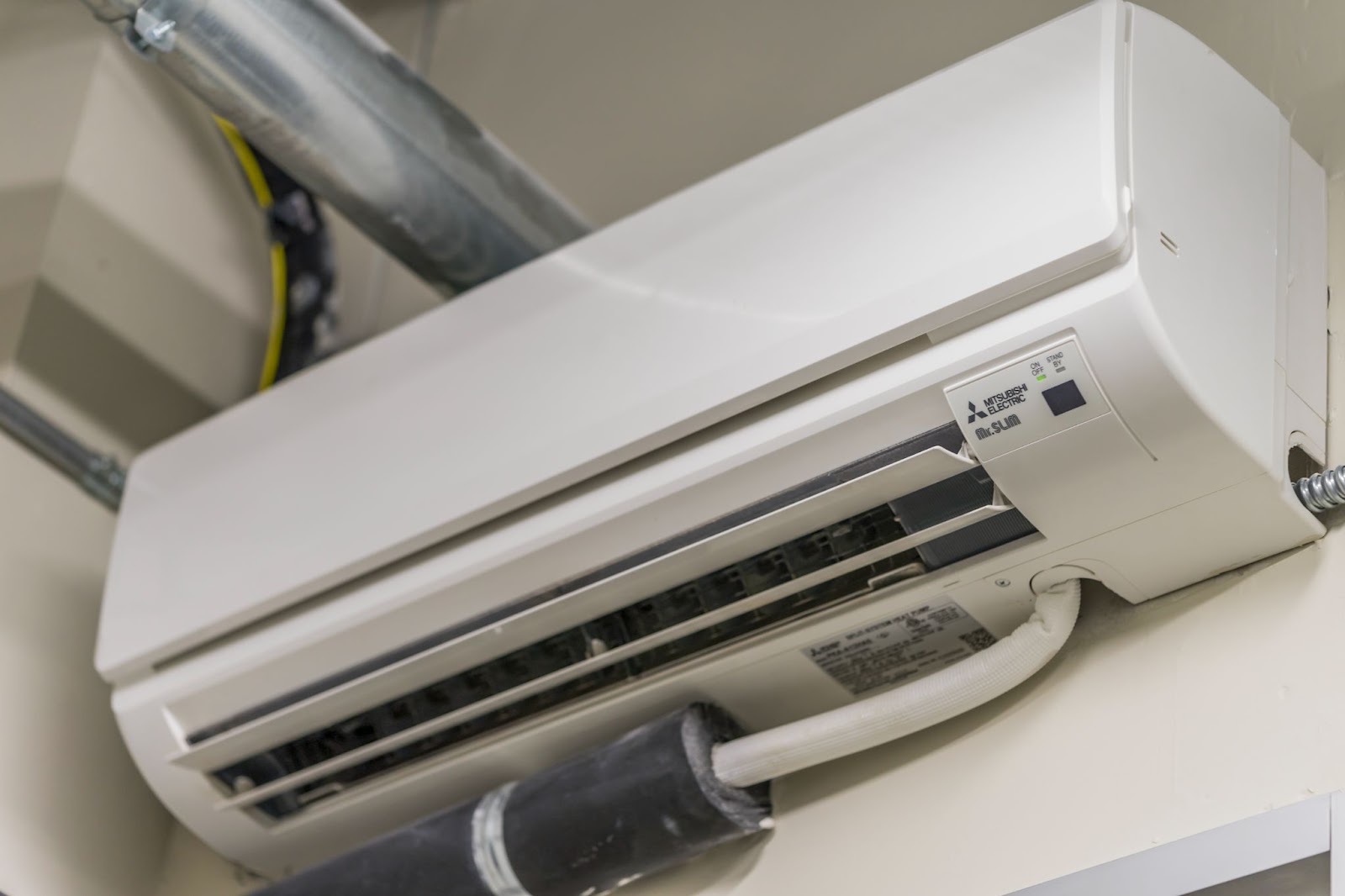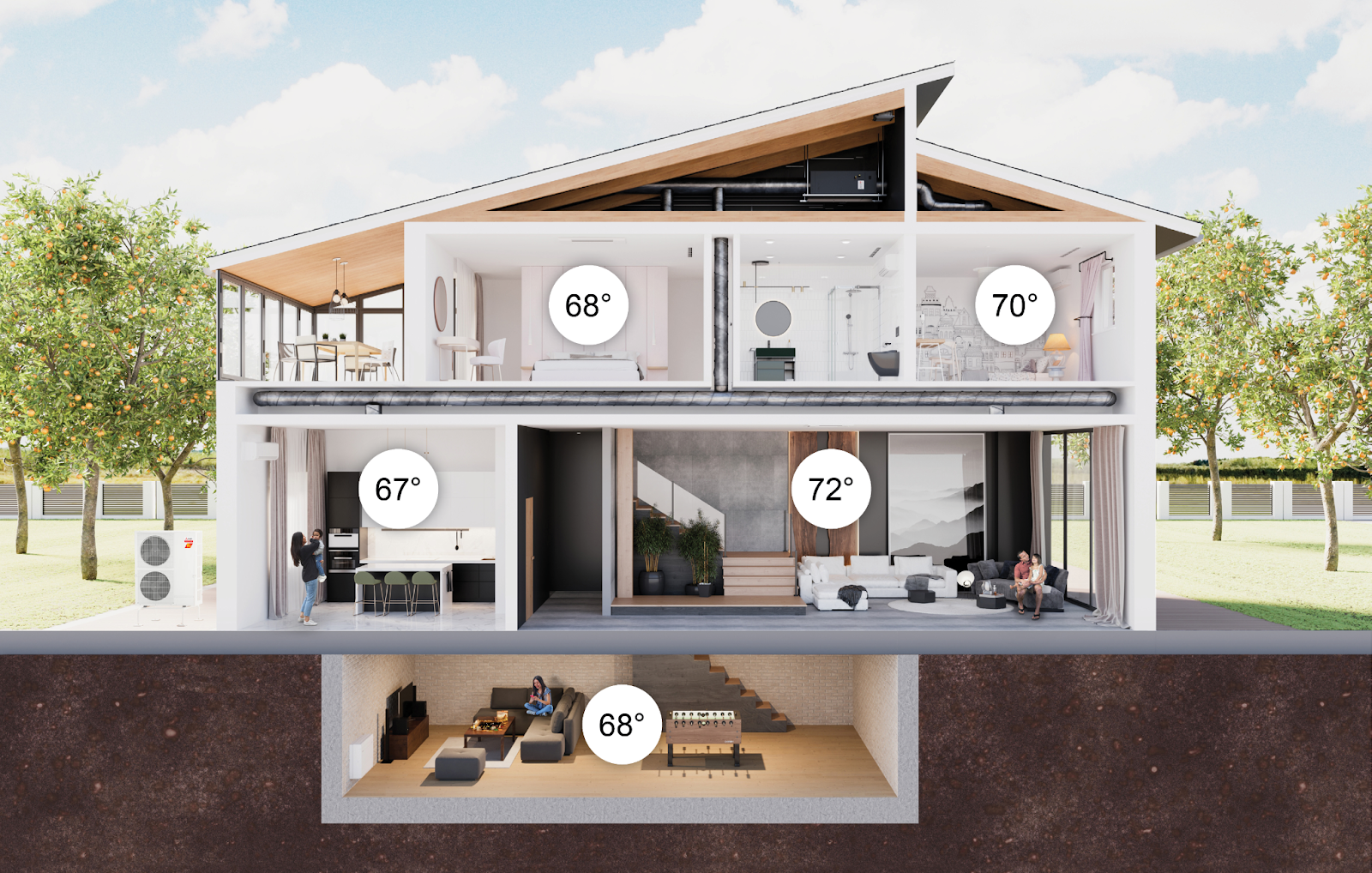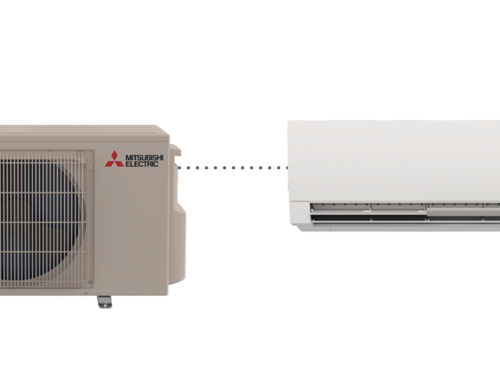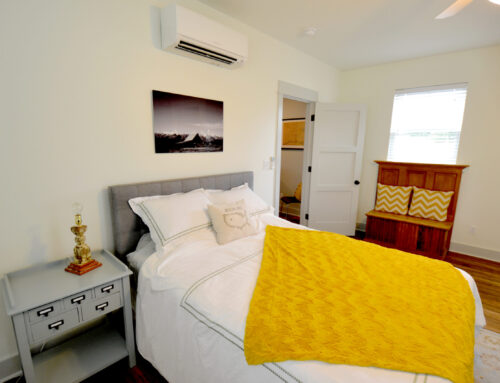In the vast urban landscapes where the hum of the city blends with the rhythm of daily life, the quest for the perfect apartment cooling solution becomes a crucial endeavor for comfort and sanity.
Central air conditioning, often deemed the gold standard for climate control, remains a distant dream for many apartment dwellers. This brings us to the forefront of alternative cooling solutions: through-the-wall air conditioners and PTAC units.
Each presents a unique set of features, benefits, and considerations, begging the question: which is the right choice for your urban oasis?

Understanding Your Options
When it comes to selecting the right cooling solution for your apartment, the decision often boils down to two main contenders: through-the-wall air conditioners and PTAC units. Each system offers distinct advantages and considerations, making it crucial to understand their features and how they align with your needs.
Through-the-Wall Air Conditioning: A Stealthy Cooling Companion
Through-the-wall air conditioners are designed for efficiency and discretion. Mounted within a sleeve that is installed into a precisely cut space in an exterior wall, these units are a semi-permanent solution for cooling and, in many cases, heating your living space.
Unlike window units that can obstruct views and take up valuable window space, through-the-wall air conditioners are integrated into the building’s structure, offering a seamless look that complements the aesthetic of your apartment.
Operational Principles
Through-the-wall units operate by drawing in warm air from the room, cooling it over an evaporator coil, and then recirculating the chilled air back into the space. The heat extracted from the air is expelled outside through the rear of the unit. Many models also feature a reverse cycle or electric heating element, providing warmth during cooler months.
Benefits
Aesthetic Integration: These units do not obstruct window views and maintain the architectural integrity of the building facade.
Year-Round Comfort: Many models offer both cooling and heating capabilities, eliminating the need for separate systems.
Energy Efficiency: Modern units come with energy-saving features such as programmable timers and smart thermostats.
Limitations
Installation Requirements: Installation can be complex, requiring a hole to be cut through the exterior wall and potentially affecting the building’s structural integrity.
Spatial Constraints: The unit’s placement is limited to exterior walls, which may not always align with your interior design preferences.

Ideal Use Cases:
Through-the-wall air conditioners are best suited for individuals seeking a permanent cooling solution that blends into the aesthetics of their living space. They are particularly beneficial in apartments where window preservation is essential or where external unit visibility is a concern.
PTAC Units: The Workhorse of Apartment Cooling and Heating
PTAC units, or Packaged Terminal Air Conditioners, are robust systems commonly found in commercial settings, such as hotels, but are also well-suited for residential use. These self-contained units are capable of providing both heating and cooling, making them a versatile option for year-round climate control.
Operational Principles
PTAC units function similarly to through-the-wall air conditioners in terms of cooling. However, for heating, they typically use either an electric heating element or are connected to the building’s central hot water or steam system, providing efficient warmth without the need for a separate heating device.
Benefits:
Dual Functionality: With both cooling and heating capabilities, PTAC units offer a comprehensive solution for climate control.
Ease of Installation: Particularly in new constructions or renovations, PTAC units can be easier to integrate into the building design.
Energy Efficiency: Models connected to a building’s heating system can offer more efficient heating compared to electric heaters.
Limitations:
Aesthetic Considerations: PTAC units require a significant wall cut-out and external venting grille, which may not be desirable in all architectural contexts.
Maintenance Requirements: Regular cleaning and maintenance are crucial to prevent issues like leaks and “dirty sock syndrome.”
Ideal Use Cases:
PTAC units are an excellent choice for apartment buildings or complexes looking for a unified heating and cooling solution that can be individually controlled in each unit. They are especially advantageous in new construction or extensive renovations where integration into the building’s design is feasible.
Key Differences Between Through-the-Wall and PTAC Units
When choosing between through-the-wall air conditioners and PTAC units, it’s crucial to consider several key factors that differentiate them.
These factors include initial and ongoing costs, installation requirements, operational efficiency, and maintenance demands. Understanding these differences will guide you in selecting the most suitable cooling and heating solution for your apartment or building.
Installation Complexity and Requirements
Through-the-Wall Air Conditioners:
Installation of through-the-wall units generally involves creating a hole in an exterior wall to accommodate the air conditioner. This process can be invasive and may require structural reinforcement, especially in older buildings or those with strict architectural preservation requirements.
Each unit operates independently, meaning there’s no need to integrate it with the building’s central systems. This independence simplifies installation but necessitates careful consideration of the unit’s location to ensure optimal cooling efficiency and aesthetic appeal.
PTAC Units:
PTACs are also installed through an exterior wall but are typically larger than through-the-wall air conditioners, requiring a more substantial opening. The installation process might be streamlined in new construction or during major renovations where PTAC units are part of the original building design.
In buildings with centralized heating systems, PTAC units can be integrated to use the existing hot water or steam for heating, adding an extra layer of complexity to the installation but offering potential efficiency benefits.
Cost Implications: Initial Investment and Operating Expenses
Through-the-Wall Air Conditioners:
The initial cost of through-the-wall units can vary widely based on the unit’s capacity, features, and energy efficiency ratings. Generally, they are less expensive than PTAC units due to their simpler design and operation.
Operating costs depend on the unit’s energy efficiency and the local cost of electricity. Modern units with high Energy Star ratings can help mitigate these costs by optimizing energy use.
PTAC Units:
PTAC units often come with a higher upfront cost, reflecting their dual heating and cooling capabilities and the complexity of their design. This investment might be offset by the potential for lower heating costs in systems integrated with the building’s heating infrastructure.
The cost of running a PTAC unit varies based on whether it uses electricity or the building’s hot water for heating, the latter of which can be more cost-effective in buildings with efficient central boilers.
Energy Efficiency and Climate Impact
Through-the-Wall Air Conditioners:
These units have made significant strides in energy efficiency, with many models now featuring programmable settings, smart home integration, and improved cooling technologies that reduce electricity consumption.
Their heating efficiency, when applicable, varies based on the type of heater integrated (electric vs. heat pump), with heat pumps generally offering better efficiency.
PTAC Units
PTACs offer efficient heating by leveraging the building’s central heating system, which can be more energy-efficient than electric heaters, especially in larger buildings with modern, efficient boilers.
Cooling efficiency is comparable to through-the-wall units, though the specific model and its energy rating will dictate actual energy use.
Maintenance and Longevity
Through-the-Wall Air Conditioners:
Maintenance typically involves regular filter cleaning and periodic checks of the cooling system to ensure efficient operation. These tasks can usually be performed by the user or with minimal professional assistance.
The enclosed design of through-the-wall units can protect their components from external elements, potentially extending their lifespan with proper care.
PTAC Units:
PTAC units require more comprehensive maintenance, including regular cleaning of both the air filter and the condenser coils, as well as checks on the system that integrates with the building’s heating. Failure to maintain a PTAC unit properly can lead to issues like leaks or the dreaded “dirty sock syndrome.”
The dual-function nature of PTAC units and their exposure to more complex operating conditions may influence their longevity and necessitate more frequent professional servicing.

The Installation Process Simplified
Installing a through-the-wall air conditioner or PTAC unit is not a simple DIY project. It requires careful planning, adherence to building codes, and, often, professional assistance. For through-the-wall units, the process involves cutting an opening in an exterior wall, installing a sleeve, and ensuring proper sealing and insulation.
PTAC installation, while similar, may also involve connecting the unit to the building’s hot water system, necessitating professional plumbing skills.
Final Thoughts and Recommendations
In the debate between through-the-wall air conditioners and PTAC units, the right choice ultimately depends on your specific needs, building infrastructure, and budget.
Through-the-wall units offer a versatile, cost-effective solution for those seeking simplicity and efficiency, while PTAC units provide robust, all-in-one heating and cooling for buildings equipped to accommodate them.
Conclusion
As urban dwellers navigate the complexities of apartment living, the choice between through-the-wall air conditioners and PTAC units represents a critical decision in achieving comfort and efficiency. By carefully considering the unique attributes and requirements of each option, residents can ensure their cooling solutions enhance their living spaces without compromise.







Leave A Comment